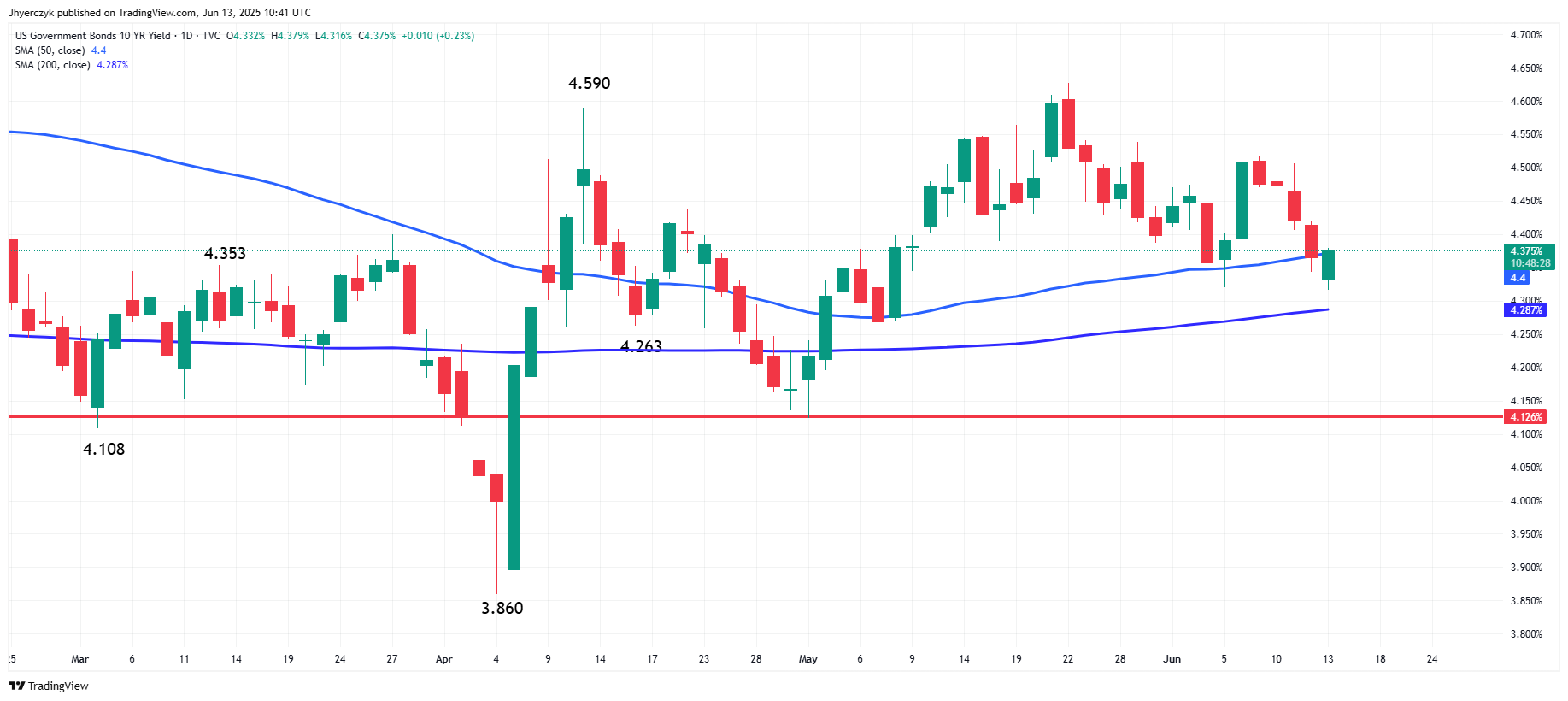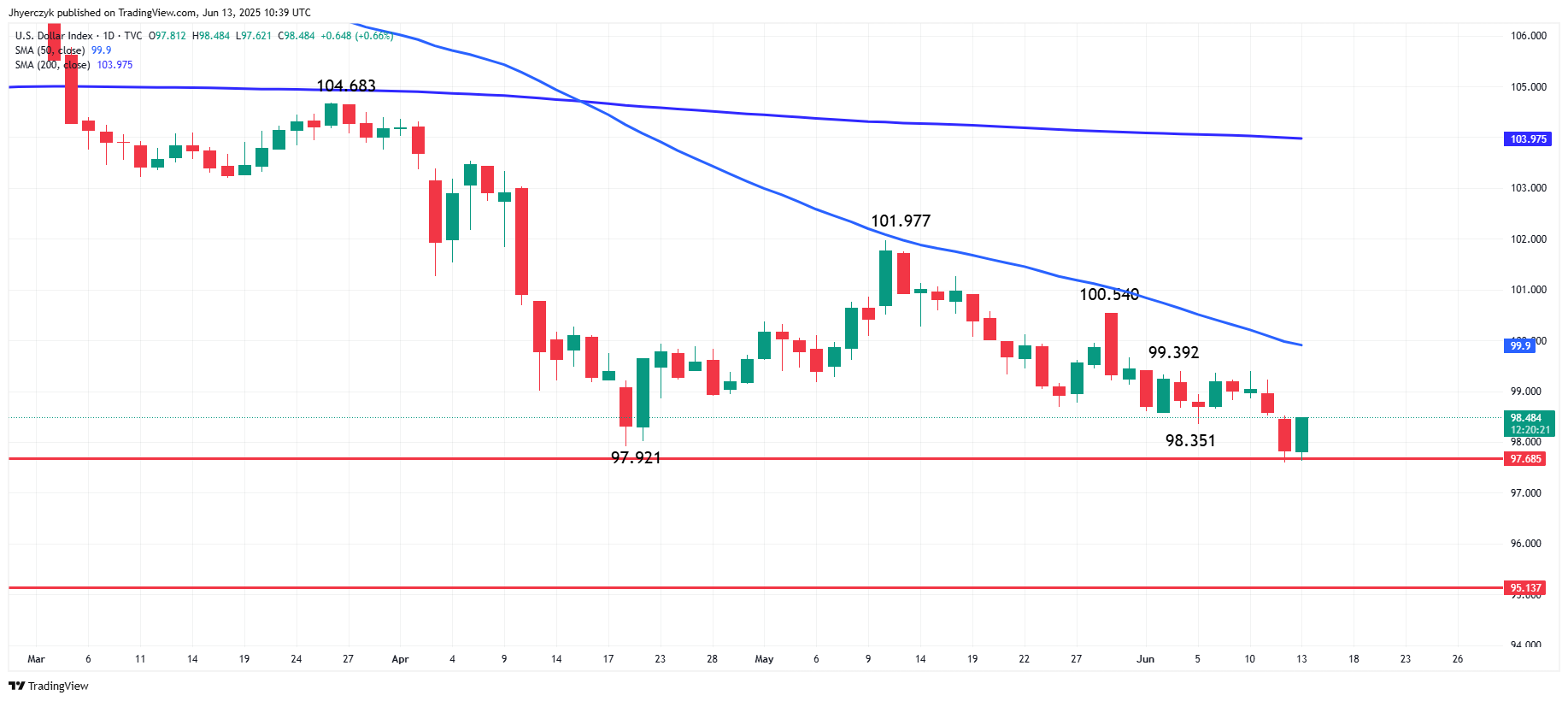Gold (XAUUSD) Price Forecast: Gold Rally Targets $3,500 as Geopolitical Risk Grows
LONDON (June 13) Gold prices climbed on Friday to their highest level since late April, supported by escalating geopolitical tensions between Israel and Iran. The renewed Middle East conflict has reignited safe-haven demand, pushing spot gold to $3,444.50 in London.
Investors rushed to gold after Israel launched airstrikes targeting Iran’s nuclear and ballistic missile infrastructure, killing high-ranking Iranian military officials. Iran responded by firing roughly 100 drones toward Israel, further heightening concerns about a prolonged military confrontation. Markets were rattled by the possibility of broader regional involvement and potential disruptions to global oil supply, with crude futures briefly spiking as much as 13% before paring gains.
How Are U.S. Treasurys and the Dollar Reacting to the Conflict?

Daily US Government Bonds 10-Year Yield
Initially, the safe-haven bid extended to U.S. Treasury markets, pushing yields down early in the session. However, by mid-morning London time, yields had reversed course. The 10-year yield rose to 4.373%, up 1.6 basis points, while 2- and 5-year yields gained around 2.1 basis points. The turnaround suggested that markets are recalibrating expectations for Fed rate cuts in light of geopolitical risks.

Daily US Dollar Index (DXY)
Meanwhile, the U.S. dollar rallied sharply after hitting a three-year low the previous day. The dollar index climbed 0.42% to 98.33, driven by renewed risk-off sentiment. Gains extended even against other typical safe-haven currencies, with the dollar up 0.23% against the Swiss franc and 0.28% against the Japanese yen. ING analysts noted that the conflict gave the “oversold and undervalued dollar” a much-needed catalyst for a rebound.
Physical Demand Falters in Asia Despite Rising Bullion Prices
Even as paper gold markets gained traction, physical demand weakened across key Asian markets. In India, prices surged above the symbolic 100,000-rupee level, sharply curbing consumer buying. The disconnect between strong institutional flows and retail demand highlights how geopolitical risks, rather than physical consumption, are currently driving price action.
FXEmpire










